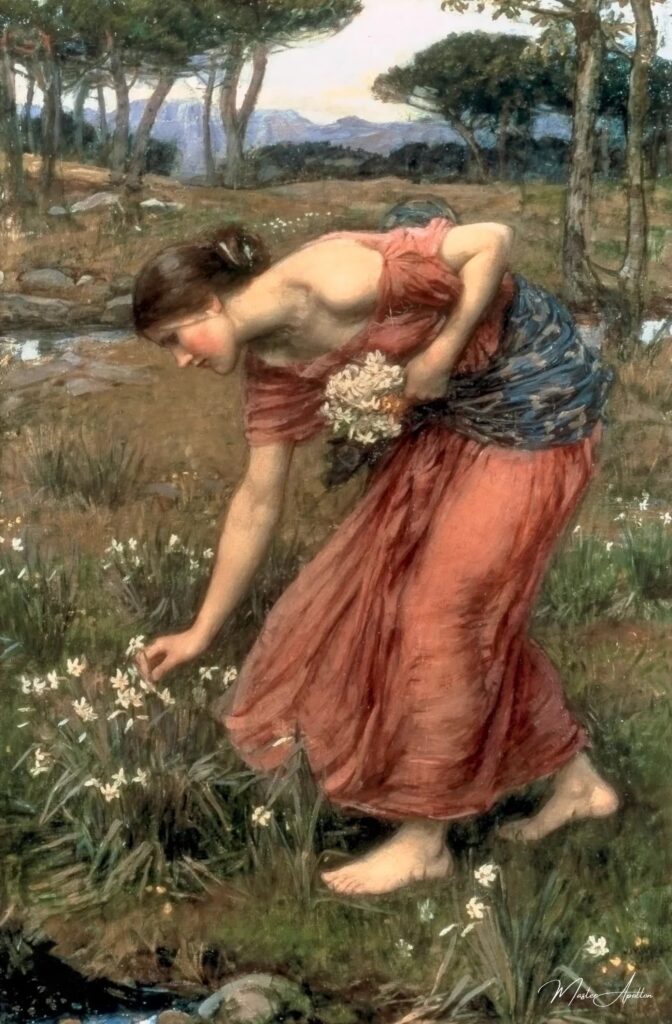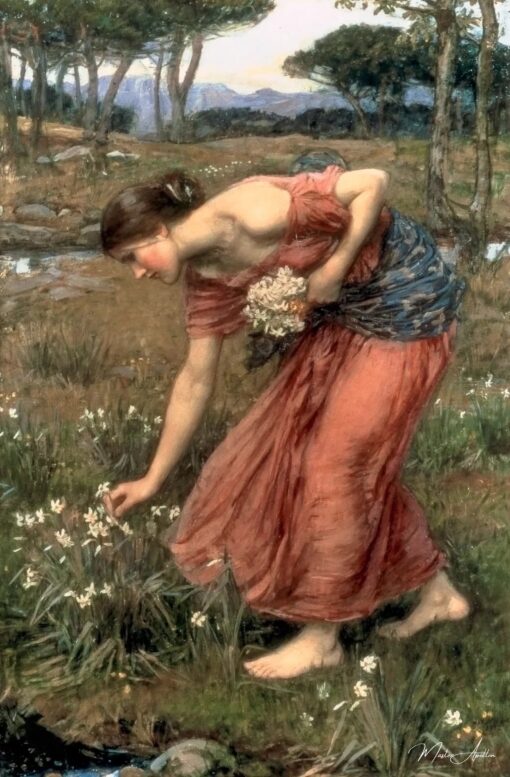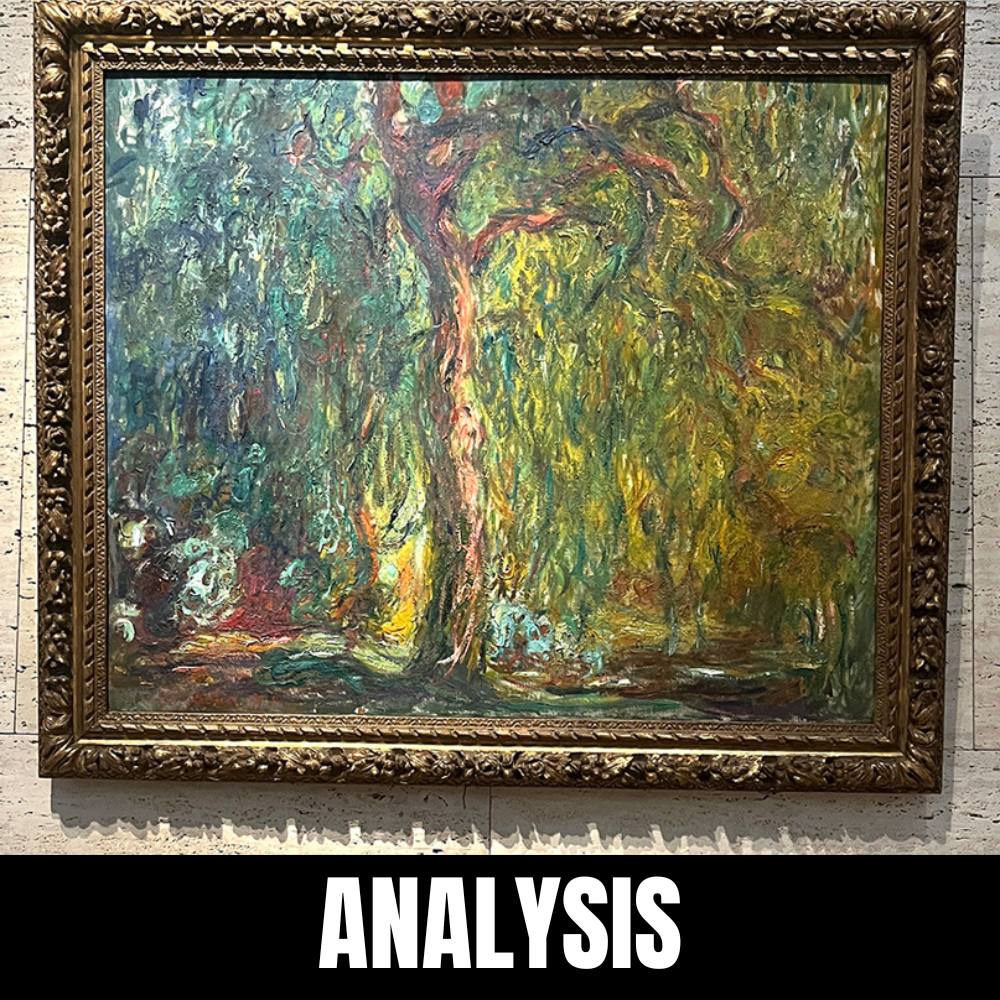Your cart is currently empty!

Narcissus – John William Waterhouse
Immerse yourself in the enchanting world of classical art with our highest quality oil painting reproduction of “Narcissus” by John William Waterhouse. This exquisite piece captures the poignant beauty and tragic allure of the mythological figure, Narcissus, as he gazes into the shimmering waters, entranced by his own reflection.
Every brushstroke is meticulously recreated, reflecting the ric…
Narcissus – John William Waterhouse
John William Waterhouse’s Narcissus (1897) is a captivating depiction of one of Greek mythology’s most poignant tales: the story of Narcissus, a beautiful youth who falls in love with his reflection. Through his characteristic blend of romanticism, mythology, and Pre-Raphaelite influences, Waterhouse transforms this timeless story into a visually and emotionally resonant masterpiece.
The Myth of Narcissus
The story of Narcissus originates in Greek mythology and is most famously recounted in Ovid’s Metamorphoses. Narcissus, a youth of extraordinary beauty, scorns the love of others, including the nymph Echo, who pines for him in vain. As punishment for his vanity and cruelty, he is cursed to fall in love with his own reflection, leading to his eventual demise. His body is said to transform into the narcissus flower that bears his name.
Waterhouse’s Interpretation
In Narcissus, Waterhouse focuses on the pivotal moment of the myth: the youth gazing at his reflection. The painting captures the melancholic beauty of the story, emphasizing both Narcissus’s allure and his tragic fate.
1. Composition and Setting
The scene unfolds beside a tranquil pool of water, framed by lush greenery and soft natural tones. Narcissus kneels at the water’s edge, his figure mirrored in the still surface below. Waterhouse’s attention to detail in the foliage and the shimmering water creates an idyllic, almost dreamlike atmosphere.
2. Narcissus’s Appearance
Waterhouse portrays Narcissus as a young man of striking beauty, with golden hair, delicate features, and a graceful posture. His body is slightly hunched over, as if entranced by the image before him. His expression is one of quiet yearning, capturing the intensity of his infatuation and the pathos of his isolation.
3. Reflection and Symbolism
The reflection in the water is painted with delicate precision, symbolizing both Narcissus’s self-obsession and the ephemeral nature of his love. The water acts as a metaphor for the illusion and fragility of beauty, echoing the fleeting quality of life itself.
4. Nature as a Witness
The surrounding environment—lush plants, scattered flowers, and gentle ripples in the water—serves as a silent witness to Narcissus’s tragedy. The natural elements emphasize the harmony and yet the futility of his existence, as he becomes one with the landscape in his final transformation.
Themes and Analysis
1. The Tragedy of Vanity
Waterhouse’s Narcissus delves into the dangers of excessive self-love and vanity. Narcissus’s fate serves as a cautionary tale about the consequences of ignoring others and becoming consumed by one’s own image.
2. The Beauty of Isolation
While the story of Narcissus is inherently tragic, Waterhouse also finds beauty in his solitude. The painting exudes a sense of quiet introspection, suggesting that Narcissus’s journey, though misguided, is deeply personal and reflective.
3. Pre-Raphaelite Influences
The painting is a quintessential example of Waterhouse’s Pre-Raphaelite sensibilities. From the intricate detailing of Narcissus’s surroundings to the poetic melancholy of the scene, the work exemplifies the movement’s focus on nature, emotion, and mythological storytelling.
Waterhouse’s Artistic Vision
Waterhouse’s Narcissus is notable for its empathetic portrayal of the titular character. Unlike many interpretations that focus on the arrogance or superficiality of Narcissus, Waterhouse presents him as a figure of vulnerability and yearning. The artist’s ability to evoke both the allure and the sorrow of the myth speaks to his mastery of narrative painting.
Legacy and Cultural Resonance
The story of Narcissus has remained a powerful symbol in art, literature, and psychology. It has inspired countless works across centuries, and Waterhouse’s interpretation stands out for its delicate balance of beauty and tragedy.
In modern psychology, the term “narcissism” derives from this myth, representing an excessive focus on oneself. Waterhouse’s painting captures the origin of this concept with poignant sensitivity, offering a visual exploration of the myth’s enduring relevance.
Conclusion
John William Waterhouse’s Narcissus is a masterful depiction of one of mythology’s most enduring tales. Through his signature blend of romanticism and Pre-Raphaelite detail, Waterhouse transforms the story into a meditation on beauty, isolation, and the human condition. The painting invites viewers to reflect on the allure of self-love and the dangers of losing oneself in the process, making it a timeless and thought-provoking work of art.
John William Waterhouse
John William Waterhouse was a British painter known for his enchanting depictions of mythological and literary themes, characterized by rich colors, emotional depth, and a focus on female figures that often evoke a sense of longing and beauty.





Leave a Reply